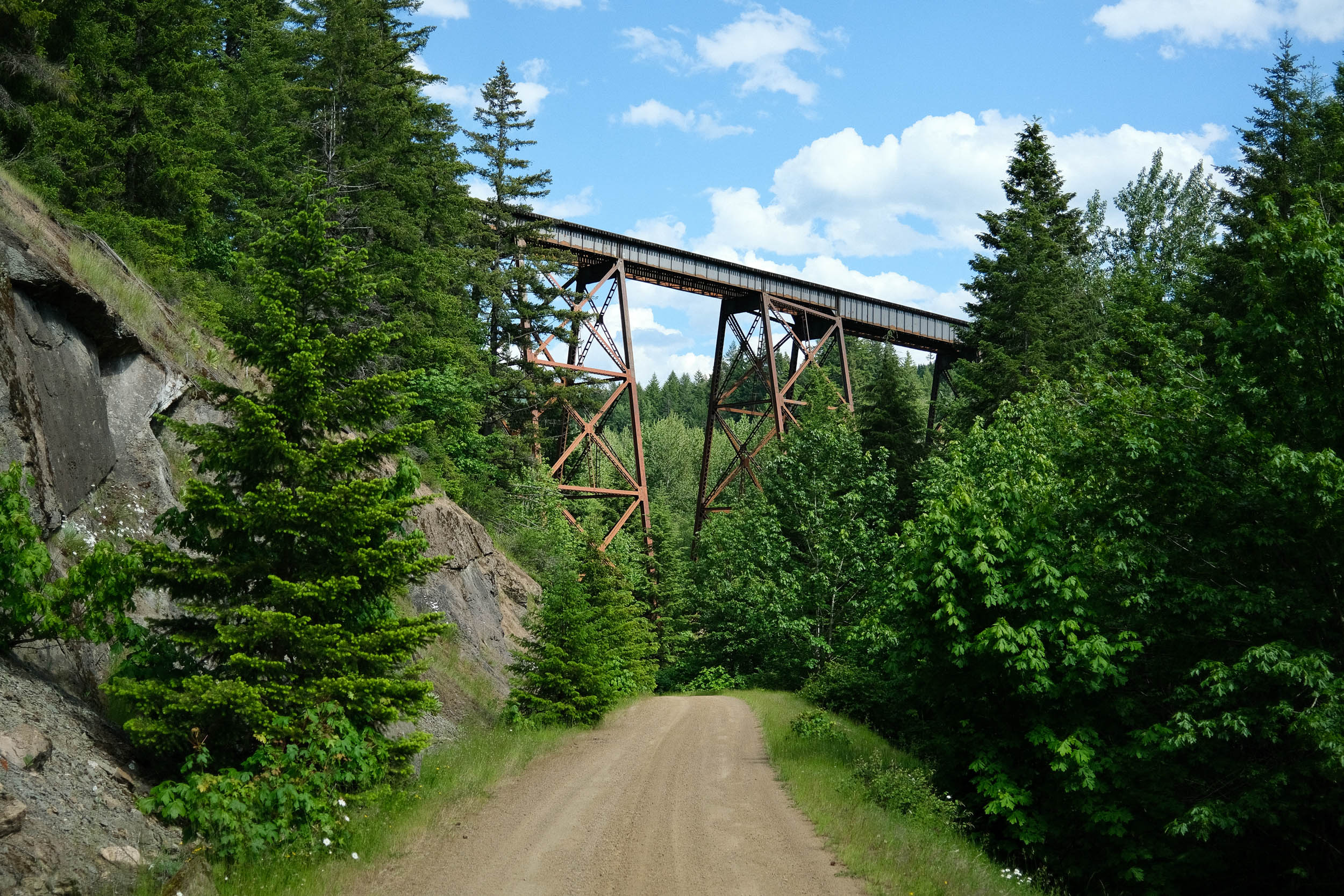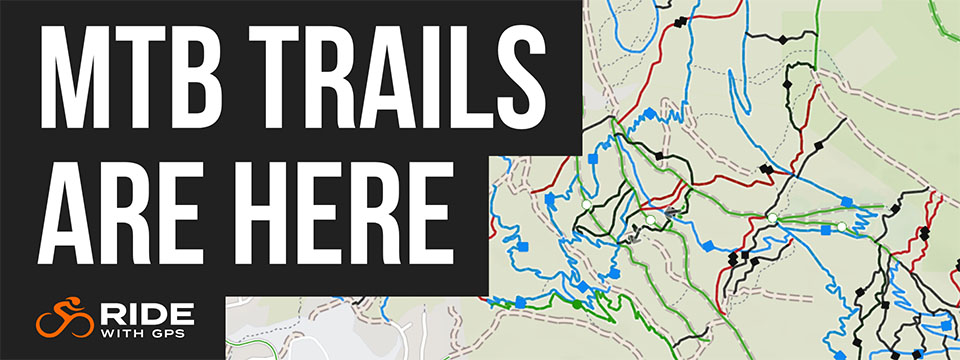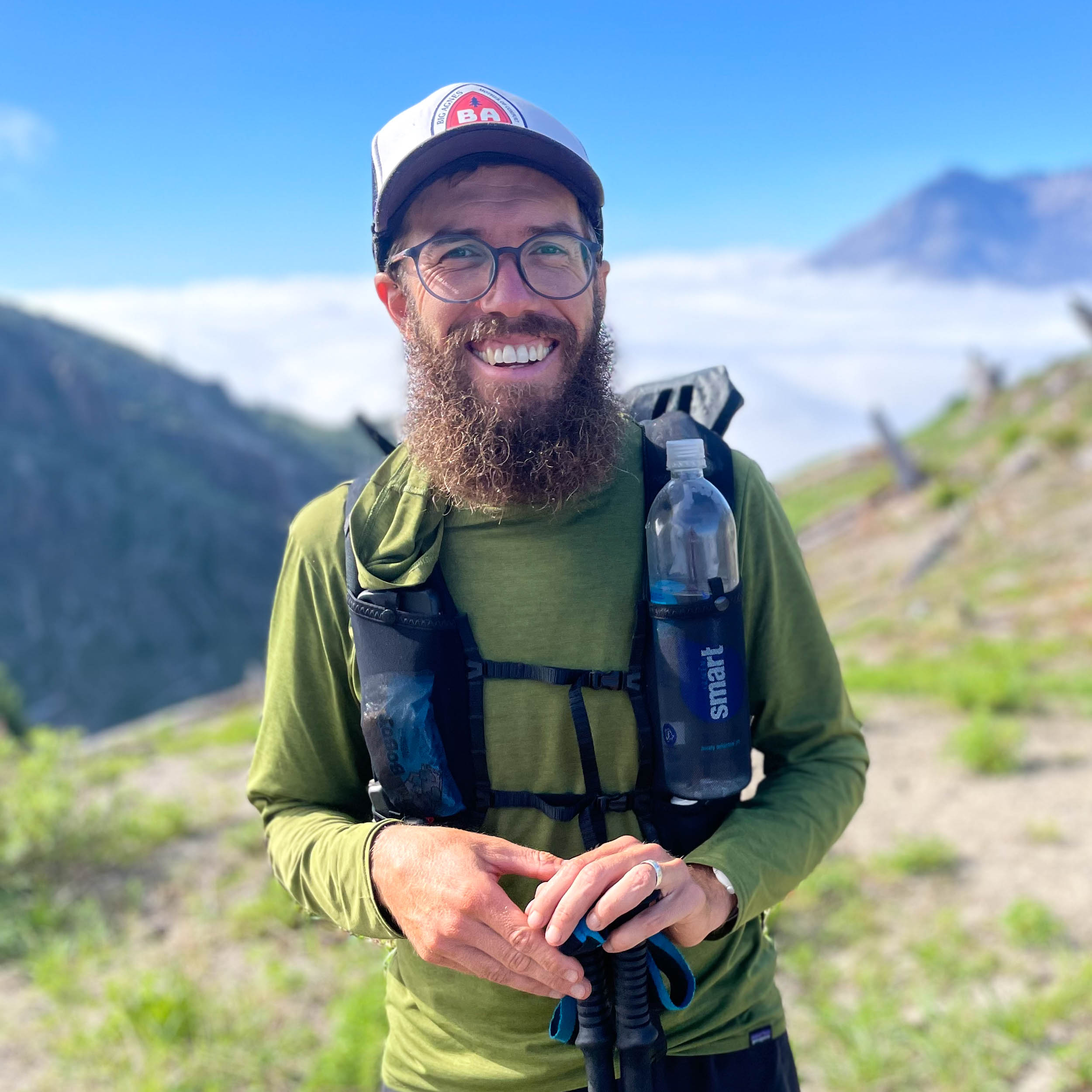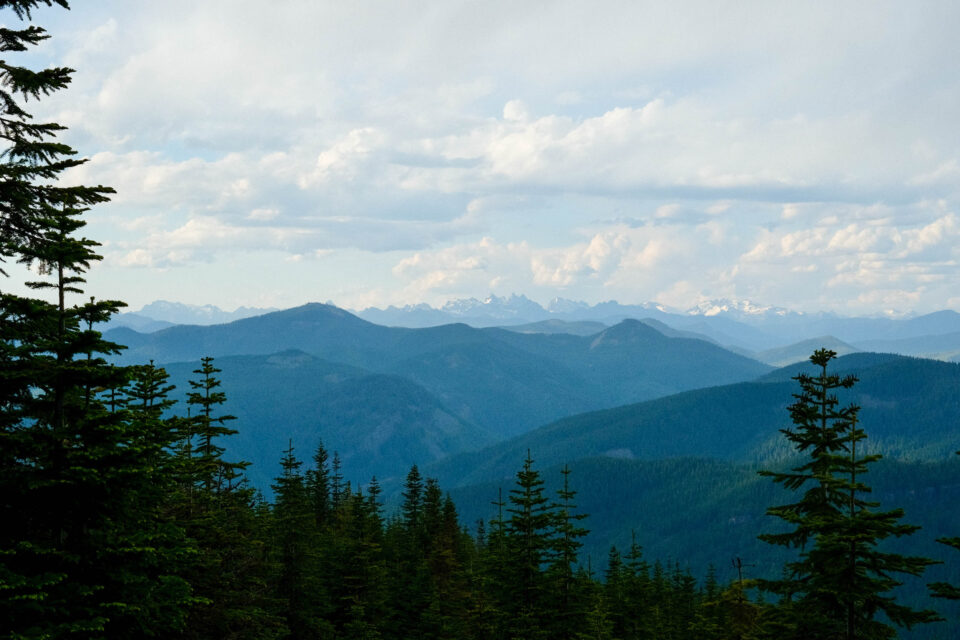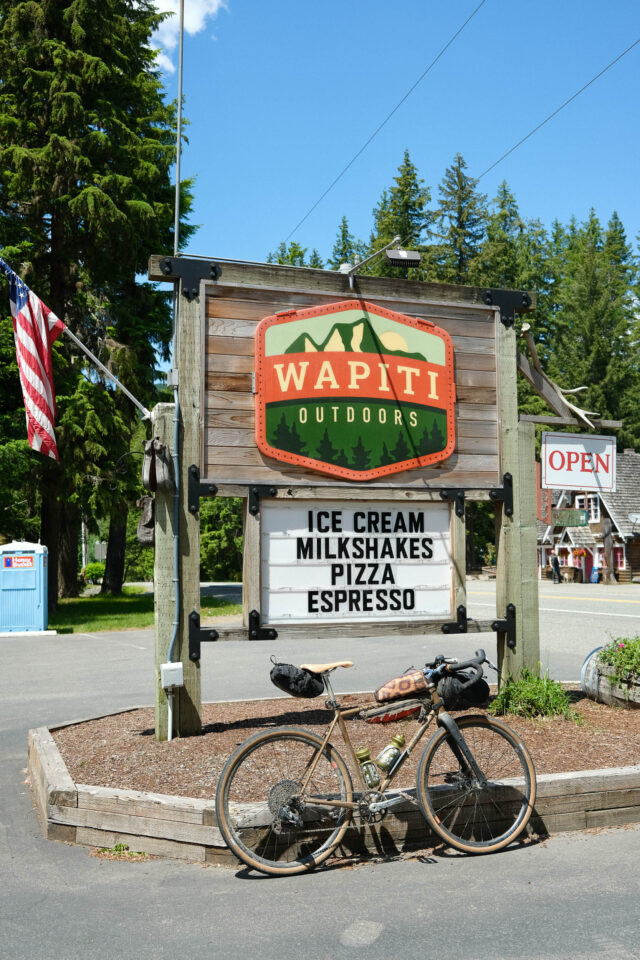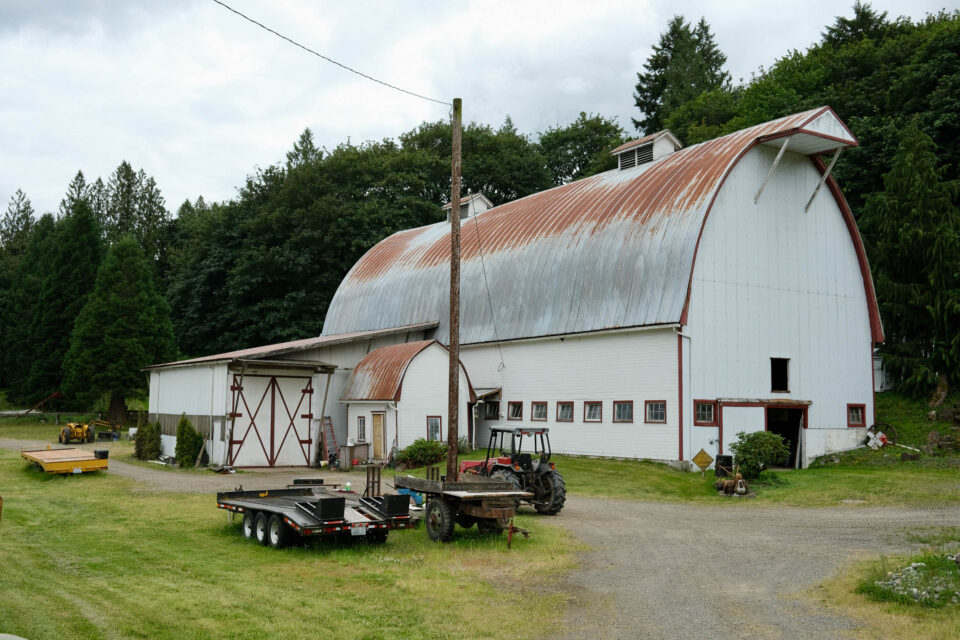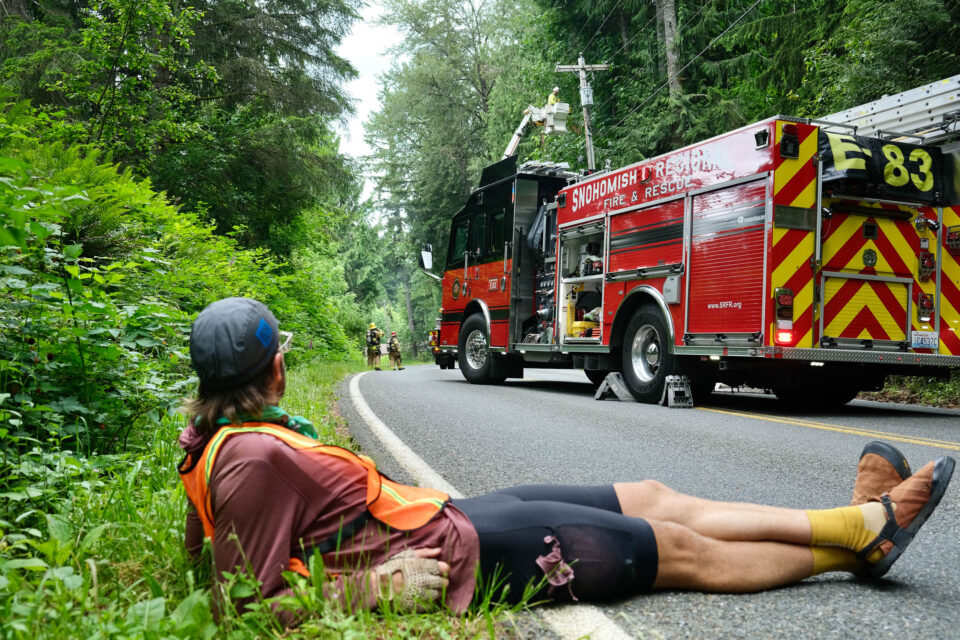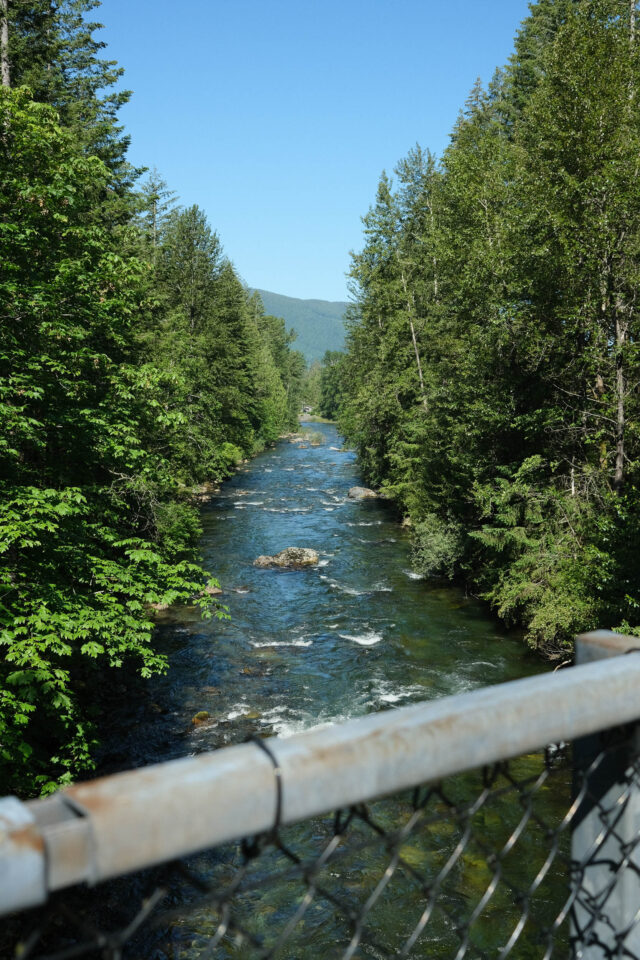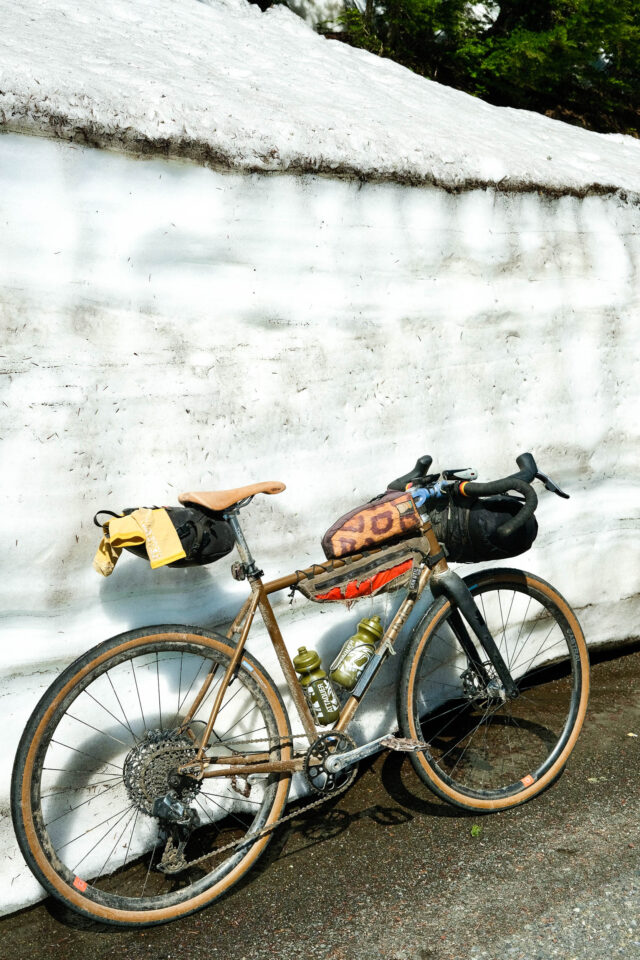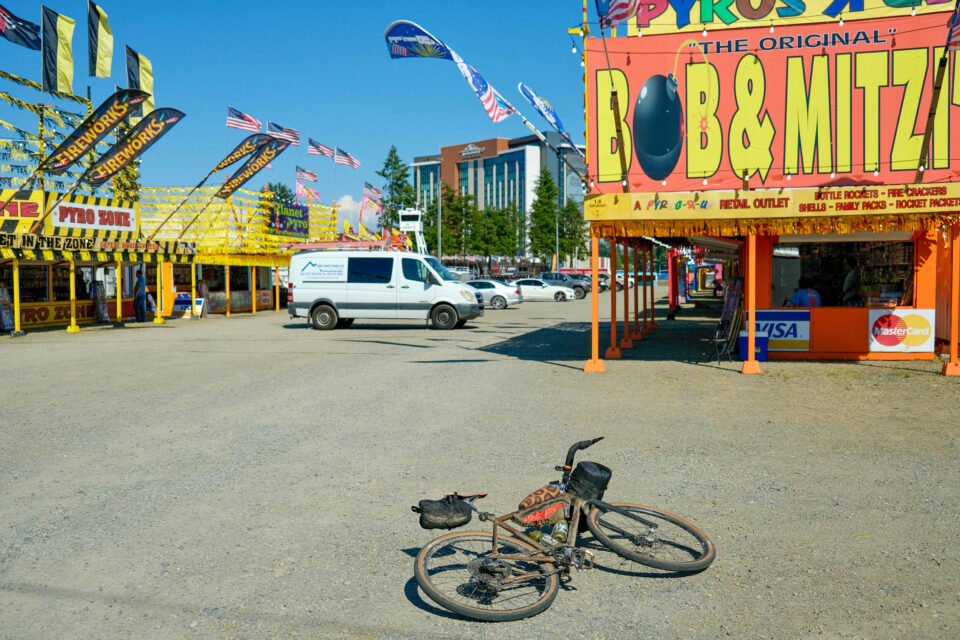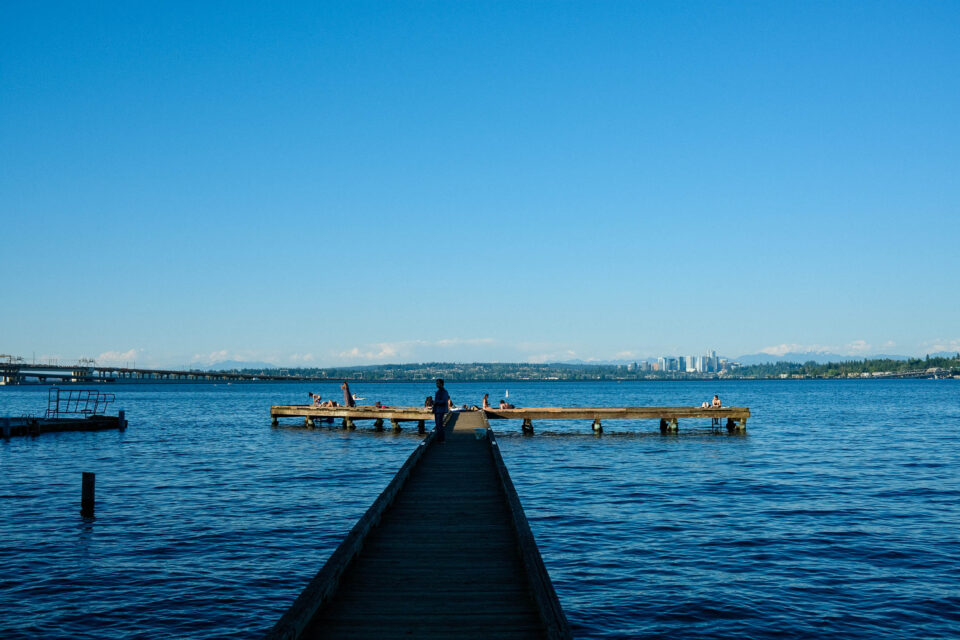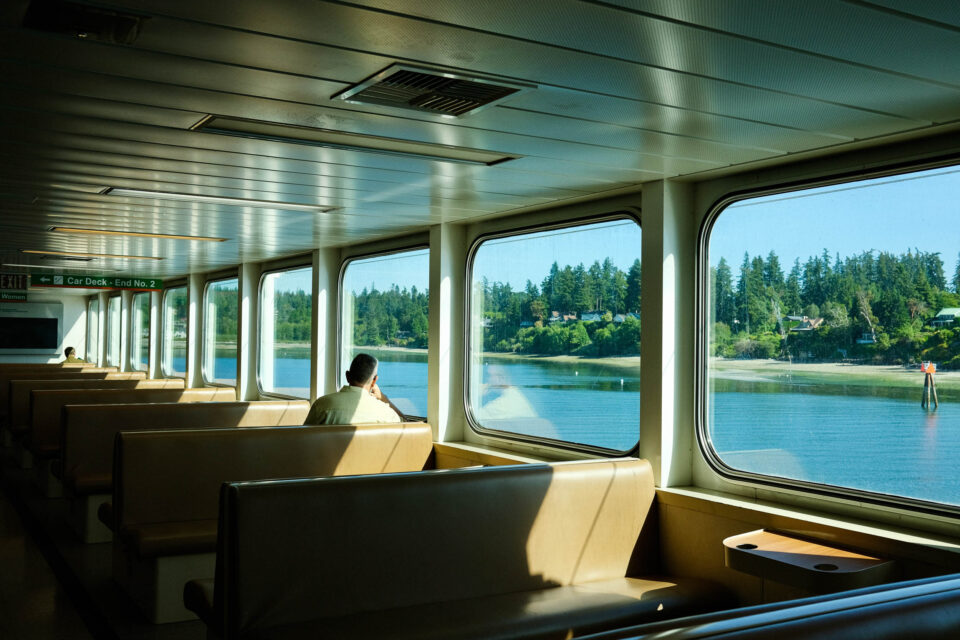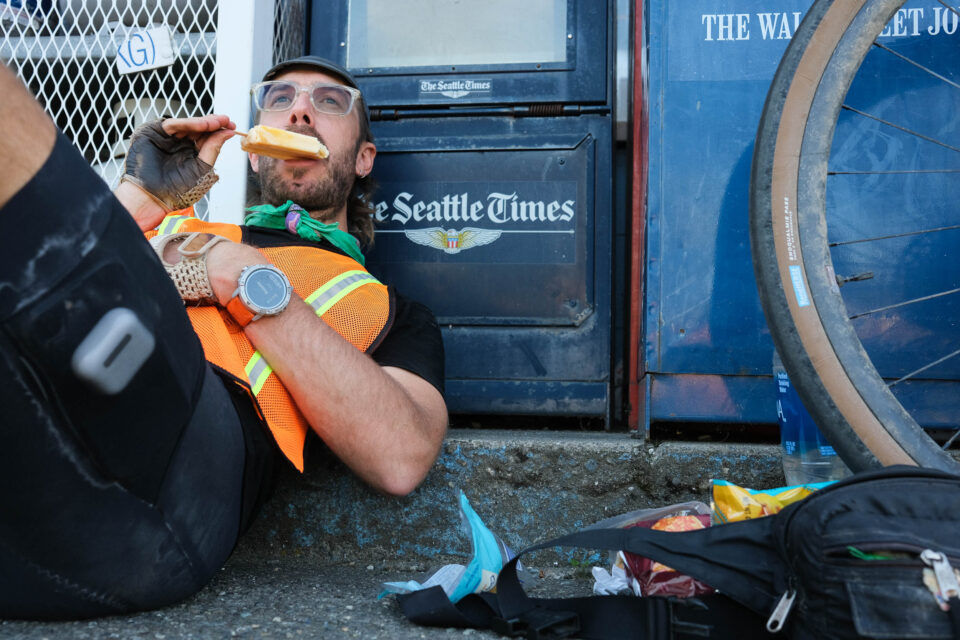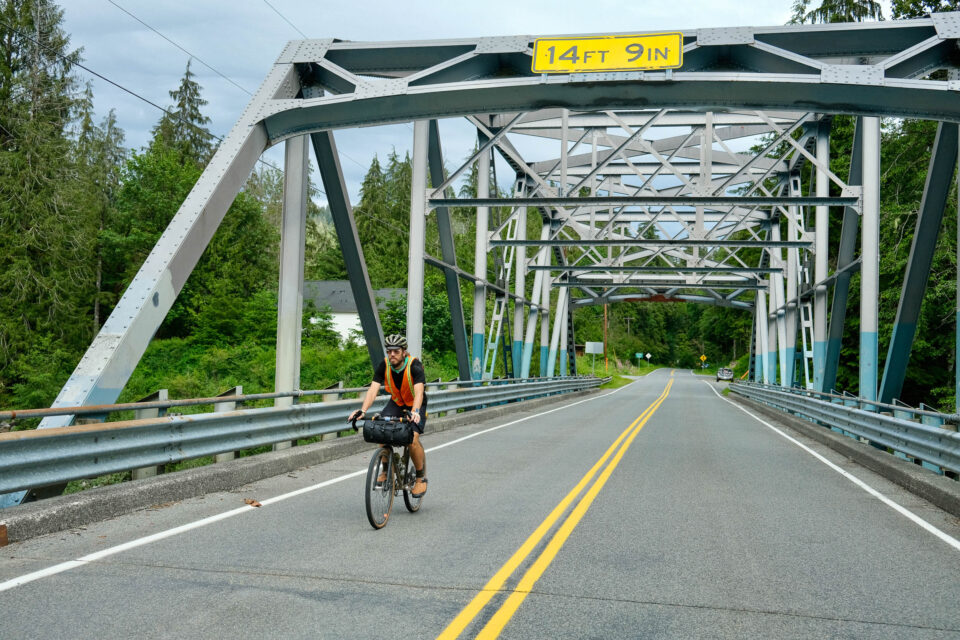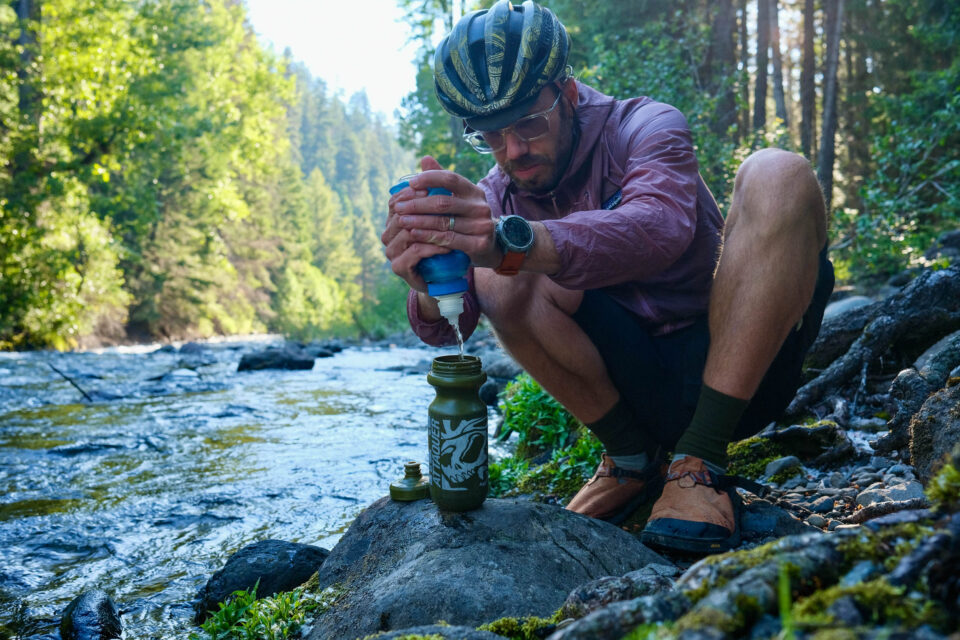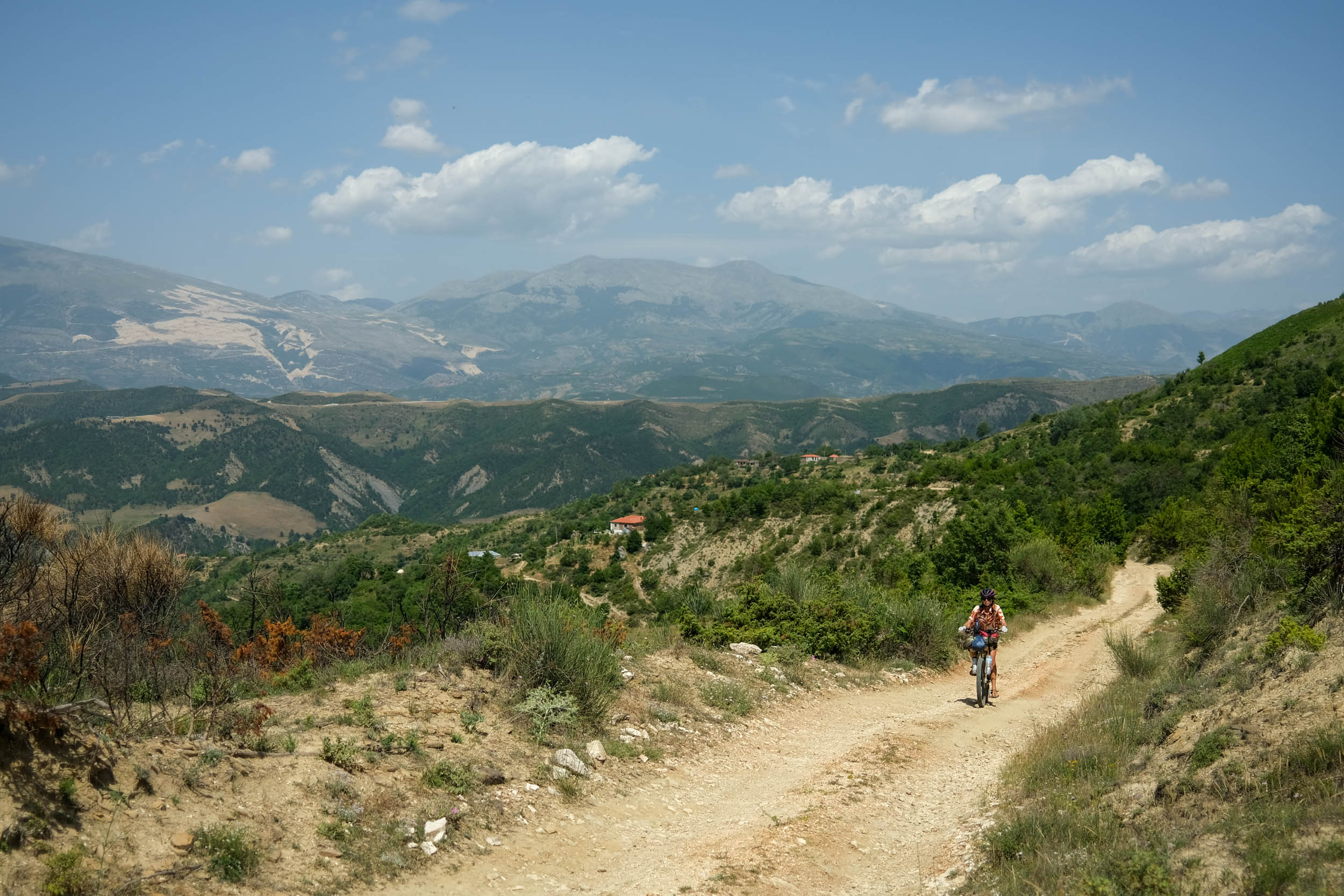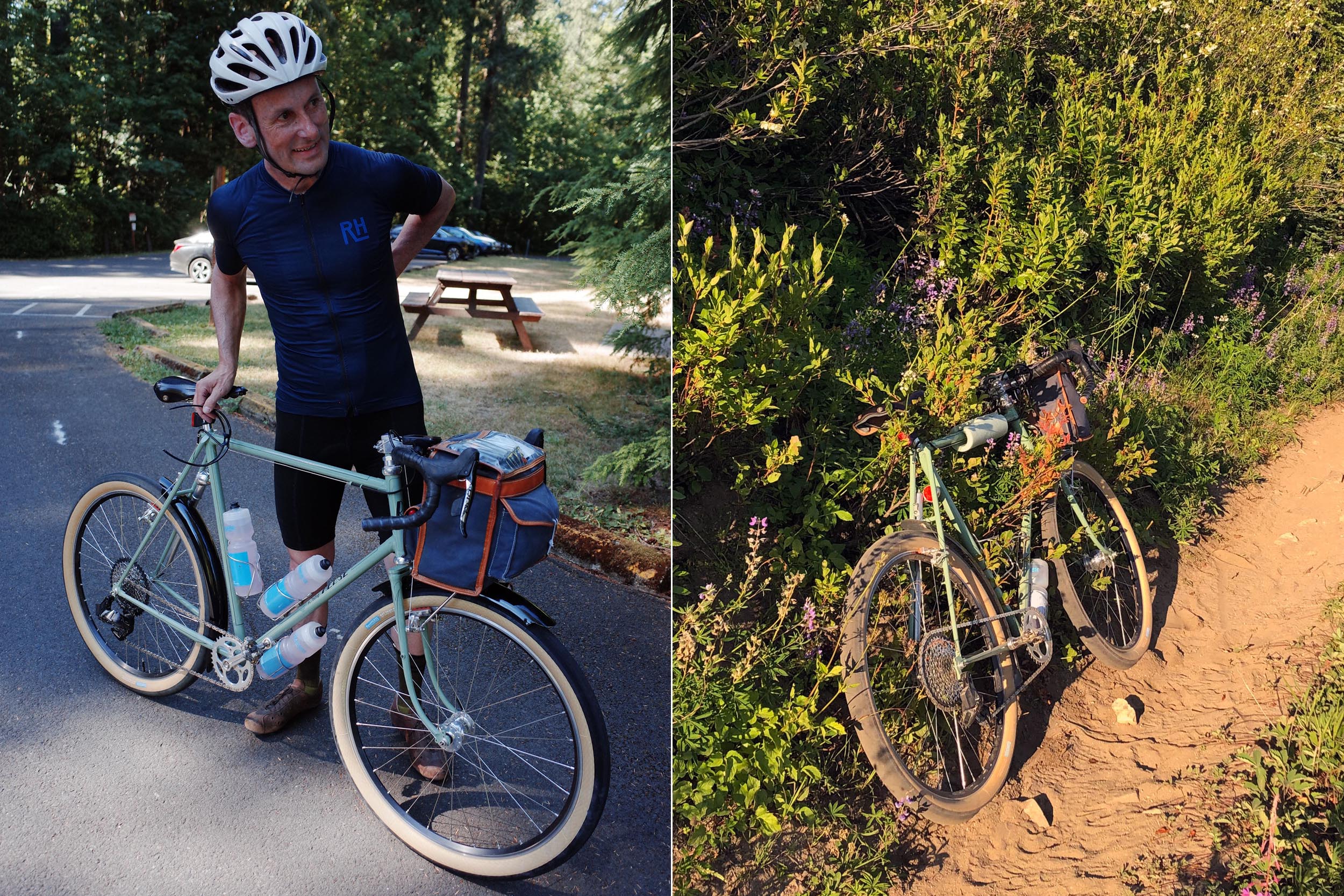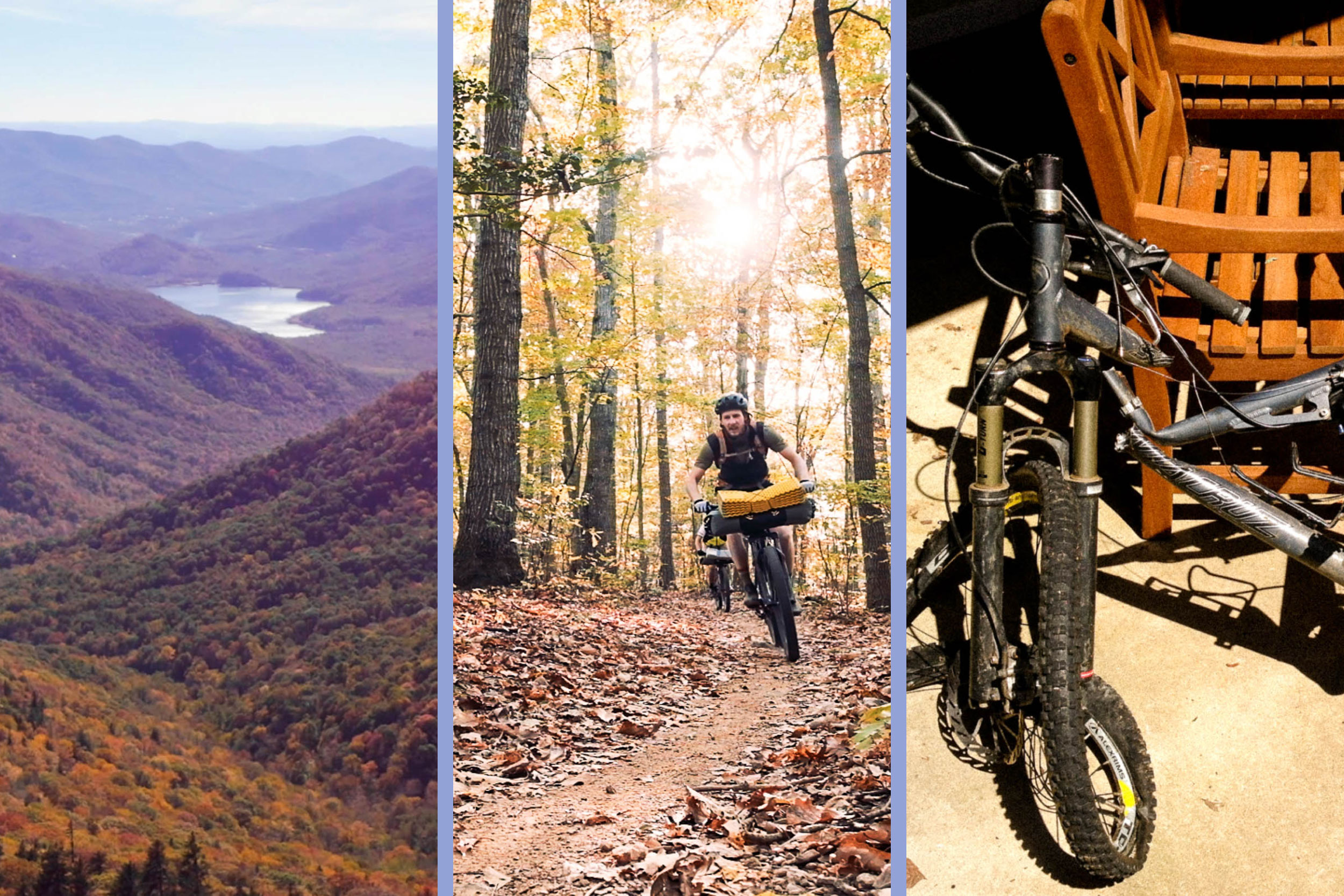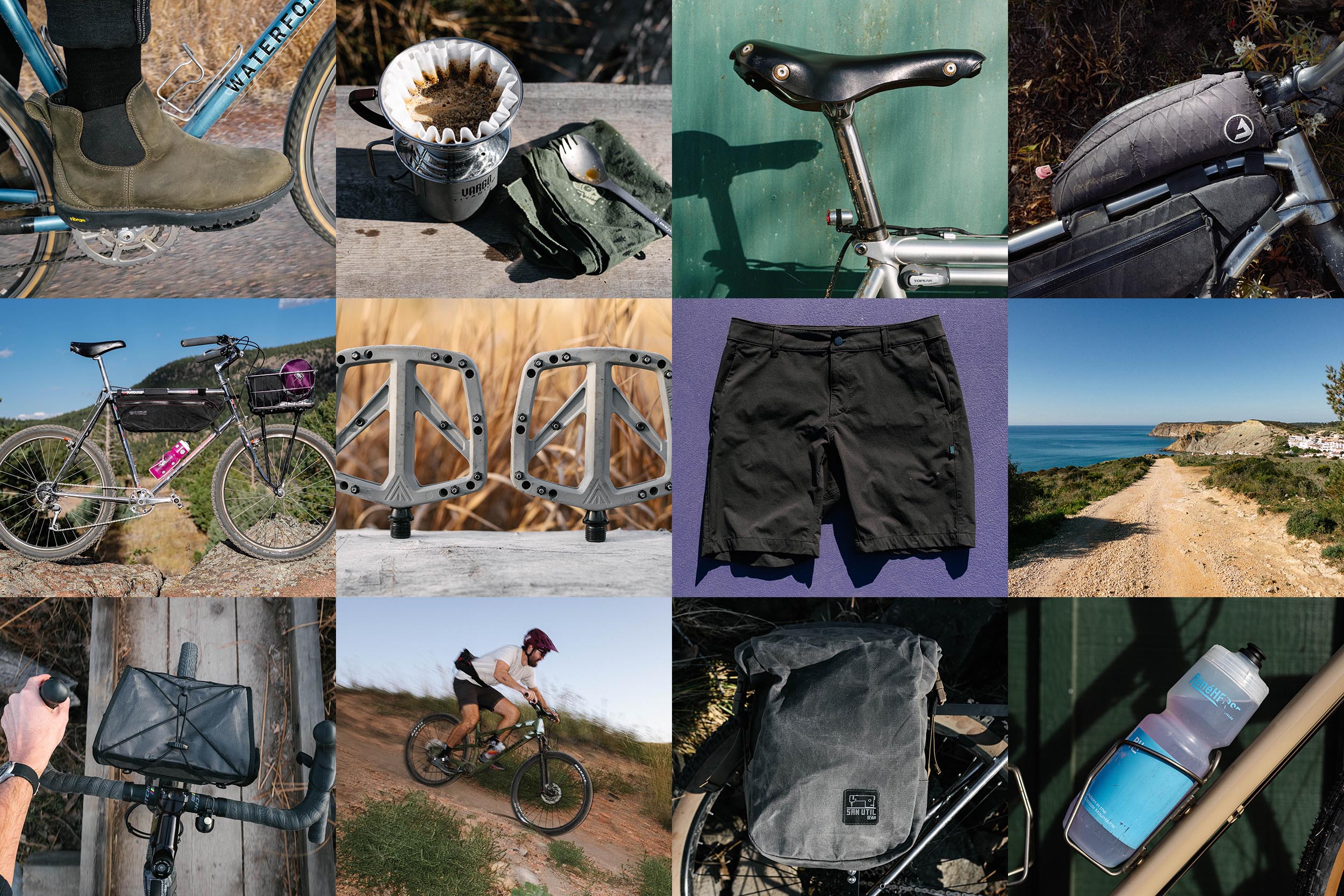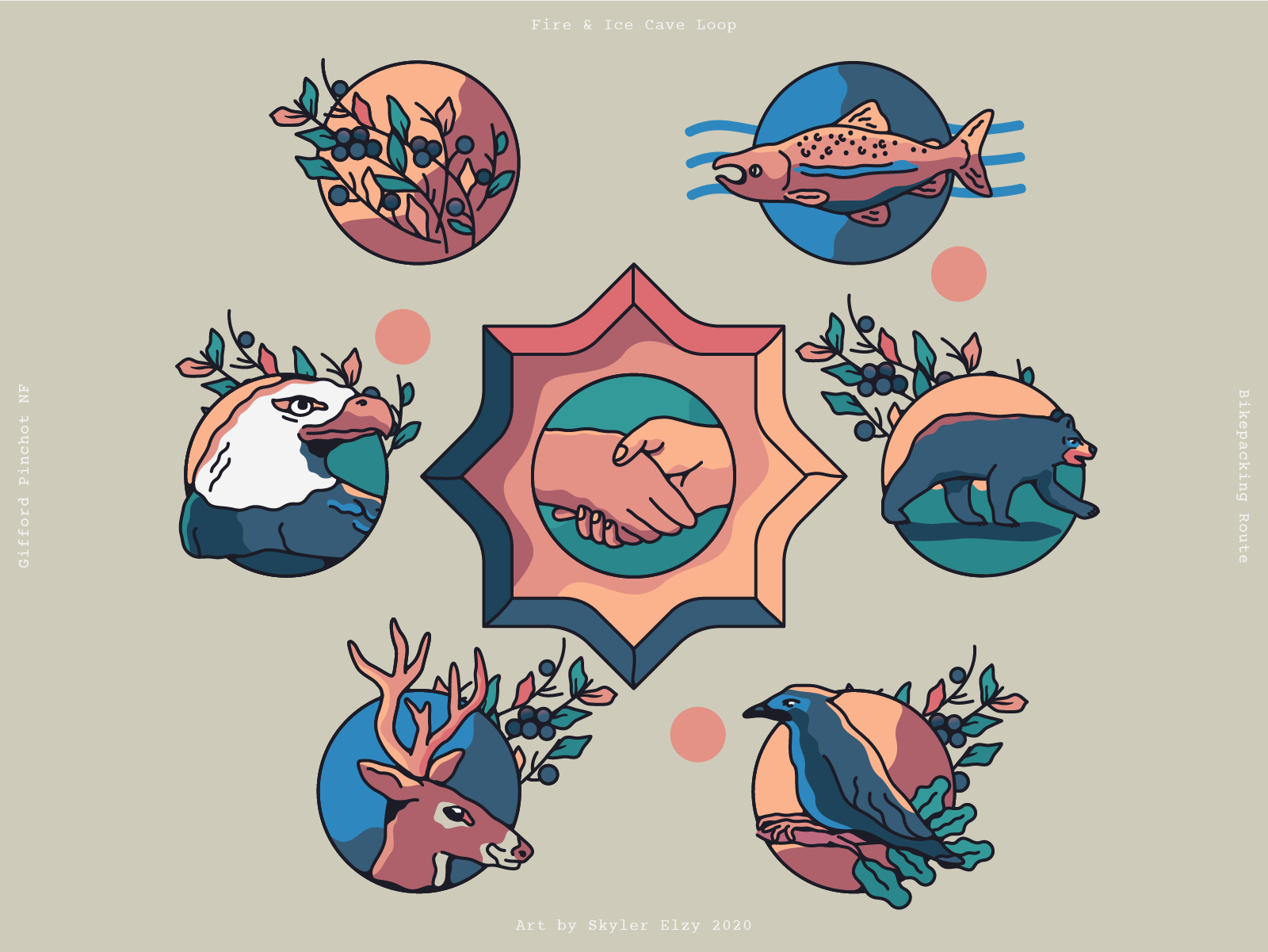The Rene Herse Pass Tour
After realizing that Rene Herse tires are named after passes, ridges, and climbs one can go ride, Henley Phillips put together route around the beautiful Pacific Northwest that linked together as many passes as he could squeeze into a short bikepacking trip. Find his engaging story of connecting six varied passes and some takeaways on what it means to be a “good rider” here…
PUBLISHED Sep 16, 2024
It must be a challenge to come up with product names in the bike world, or, I suppose, any world that has such high turnover in product offerings season after season. Putting a name to a product that’s creative yet usefully descriptive, though not too exact as to sound effortless, must take a lot of effort. Drivetrains seem to be the most stuffy of the bunch, specific bike models and frames are a tad more interesting, and the various accessories and accoutrement are probably the most fun. SRAM XX1 Eagle AXS, Surly Ghost Grappler, the Safety Pizza, and the Wizard Works Framebagracadabra are a few examples that come to mind.
Late last winter, I was considering a new bike for myself, and in the pre-contemplation stage, I found myself pondering tires, another category where the names fall along a broad spectrum of helpful to puzzling. Rene Herse tires were toward the top of my list, and I had ridden a pair of Humptulips Ridge on my Surly Troll for a while and really enjoyed them. The name was cute but didn’t mean much to me at the time.

Browsing through the options one evening, I came across Rene Herse’s Oracle Ridge tire, and finally, a product name clicked with me. Oracle Ridge makes up a huge part of the Reddington-Lemmon Loop, a go-to ride for many folks in the Tucson area. The road is often chewed up by four-wheel-drive vehicles, steep in sections, and overall, it’s an adventurous climb that starts you low in the heat and can have you finishing with a jacket, depending on the time of year. I’ve been on the route many times, and I immediately liked the bigger sense of place that a simple choice of product naming could instill.
Reading up a bit more on the other tire options, I came to learn that all of the Rene Herse tires were similarly named for real places. Places that could be experienced, most of them in the Cascade Mountains, where the company was re-established in the early 2000s. Road tires are named after passes, and the more off-road, knobbier options are named after ridges and big dirt road climbs. From there, it wasn’t too big of a leap to consider what it would be like to connect these real places in a loop around Washington and get a sense for the places that inspire the names.
A few parameters
Now, not all the names come from Washington. Alaska and Arizona are tossed in there too, and linking up both the passes and the ridges would require more time off than I had available. To put together a sensible route, I focused on just the passes in Washington in the 700c collection. There are six of them in a reasonable distance compared to only three for 650b, and the ridges were simply a more extensive tour than I had time for.

In the end, I settled on a route that would take me through a fairly remote chunk of the Central Cascades, down into Seattle, over to the Olympic Peninsula and back via ferry, and then into the Cascades for one last pass. Summer arrived, and so did my Chumba Terlingua, complete with Oracle Ridge tires for the rougher roads outside of Tucson. My Washington route was largely a road tour with some dirt sections here and there, so in perfect symmetry with the theme, I swapped over to the Snoqualmie Pass tires just before heading out. Snoqualmie would be the first pass, followed by Stampede, Chinook, Cayuse, Bon Jon, and Barlow Passes.
Snoqualmie and Stampede Passes
Snoqualmie Pass is a special place for me. I thru-hiked the Pacific Crest Trail in 2014, and it had been almost 10 years to the day since I had last been in this part of the country. Over 2,000 miles into the trail, a lackadaisical approach to treating water landed me in the emergency room with a debilitating case of giardia. Barely able to walk without feeling uneasy or queasy, I’d hitched a ride down from the pass into North Bend, Washington, spent a few hours hooked to an IV, and was ultimately taken in by the attending ER nurse to recover for the next week in her home. Beverly and her husband Matt took care of me like one of their own, attended my wedding a few years later, and was the reason I found myself back in Washington for the summer.
I camped outside of town the night before heading out, waking in the morning to discover that a raccoon had quietly destroyed my San Util Design frame bag while I slept, consuming two large burritos and most of my first day’s calories. Rice, sour cream, and a sheen of raccoon drool covered my bike. I spent the first hour of the day cleaning my bike and repacking enough food to get me through the first four passes. Finally ready, I connected a series of rails-to-trails out of town and started climbing into the forest.
Most of the roads we’re lucky enough to pedal were built for extraction, and Snoqualmie Pass is no different. Used for hundreds of years in various forms, a trail, rough road, train line, and now, an interstate, has existed for fur trading, trapping, cattle transportation, and timber hauling on this critical connection through the Cascades. In the early 1900s, a rail line known as the “Milwaukee Road” connected the pass via the Snoqualmie Tunnel. Today it makes up part of the Palouse to Cascades State Park Trail, paralleling the I-90 corridor and stretching 287 miles from North Bend to the Washington-Idaho border.

A few relics from the now-defunct line still exist here and there along the trail, mainly in the form of trellises and snow sheds meant to protect the line from avalanches. The Snoqualmie Tunnel cuts straight through the mountains for a little over two miles, and once I was inside, the temperature dropped nearly 40 degrees. Two enormous wooden doors stood slightly ajar on the other side, vegetation crowding its sides, a Hobbit-esque portal into the mountain. One pass down.
I followed the line further east and eventually turned off to begin a dirt climb up Stampede Pass via exposed powerline roads. Out of the cool shade of the forest, I immediately struggled up some of the steeper grades and decided to walk the ones that didn’t suit me. On the heels of an engineering wonder such as Snoqualmie Pass, Stampede was underwhelming and felt like any other bump in the road. Alarmingly tired, I slumped in the ditch for a snack break before continuing.

Descending the back side of pass number two, however, things felt immediately different. The constant hum of the interstate was behind me, and ahead lay an uninterrupted sea of forest and ridgelines: Norse Peak Wilderness. A beautiful stretch of dirt dropped me 2,000 feet along Sunday Creek to the confluence with the Green River, which immediately turned to gain another 3,000 feet up to Green Mountain. Suddenly, there were late-season snow patches, herds of elk, clouds gathering, and rain. Somehow, I had decided not to pack a rain jacket for a Pacific Northwest tour in June.
Chinook and Cayuse Passes
I love it when you get an itch just below your knee, where you can position your hand just right so that you can effortlessly scratch the itch as your knee comes up on each pedal stroke. If you’ve pedaled your bike long enough, you start paying attention to these little things that make for a good moment. A bike tour draws your attention to these kinds of happenings. “Small wins,” you might call them. I look in ditches for valuable trash, and I always have an eye on traffic. On the morning of day two, I noticed a lot of big trucks pulling heavy machinery on flatbeds, generators and shovels in trailers, and snow plows attached to the fronts of vehicles. Chinook and Cayuse Passes lie along the eastern edge of Mount Rainier, and based on the traffic that morning, I suddenly felt doubtful that they were clear of snow.
Chinook Pass Highway was worrisomely quiet for most of the morning. The more I climbed, the higher the snow banks grew along the sides of the road. I stopped for water and checked my phone to see what options I had in case I needed to turn around. Not many. A truck and camper trailer finally came into view near the top of the pass, and then, a parking lot full of cars and people sledding in the late-season snow. Those cars hadn’t passed me, so I knew I would be okay to descend the other side and head into Seattle.
The two passes for the day came one right after the other, and all around were dominating views of Mount Rainier. Having pedaled more than 100 miles of forest, the sudden panoramas above treeline were breathtaking. I rode the brakes on the descent to draw out the views, and before long, the high country was out of sight. Heat settled in quickly, and I opted for one of everything on the Wapiti Market sign when I hit Greenwater.
With two passes down early on, the rest of the day was all about making it into Seattle and setting myself up for the ferry ride on day three. Approaching the city, shade and water were replaced with hot, exposed urban sprawl. I sweated through Enumclaw, Auburn, and Renton, passing firecracker stands, skate parks, and multiple gas stations where I stopped for snacks and cold oranges.
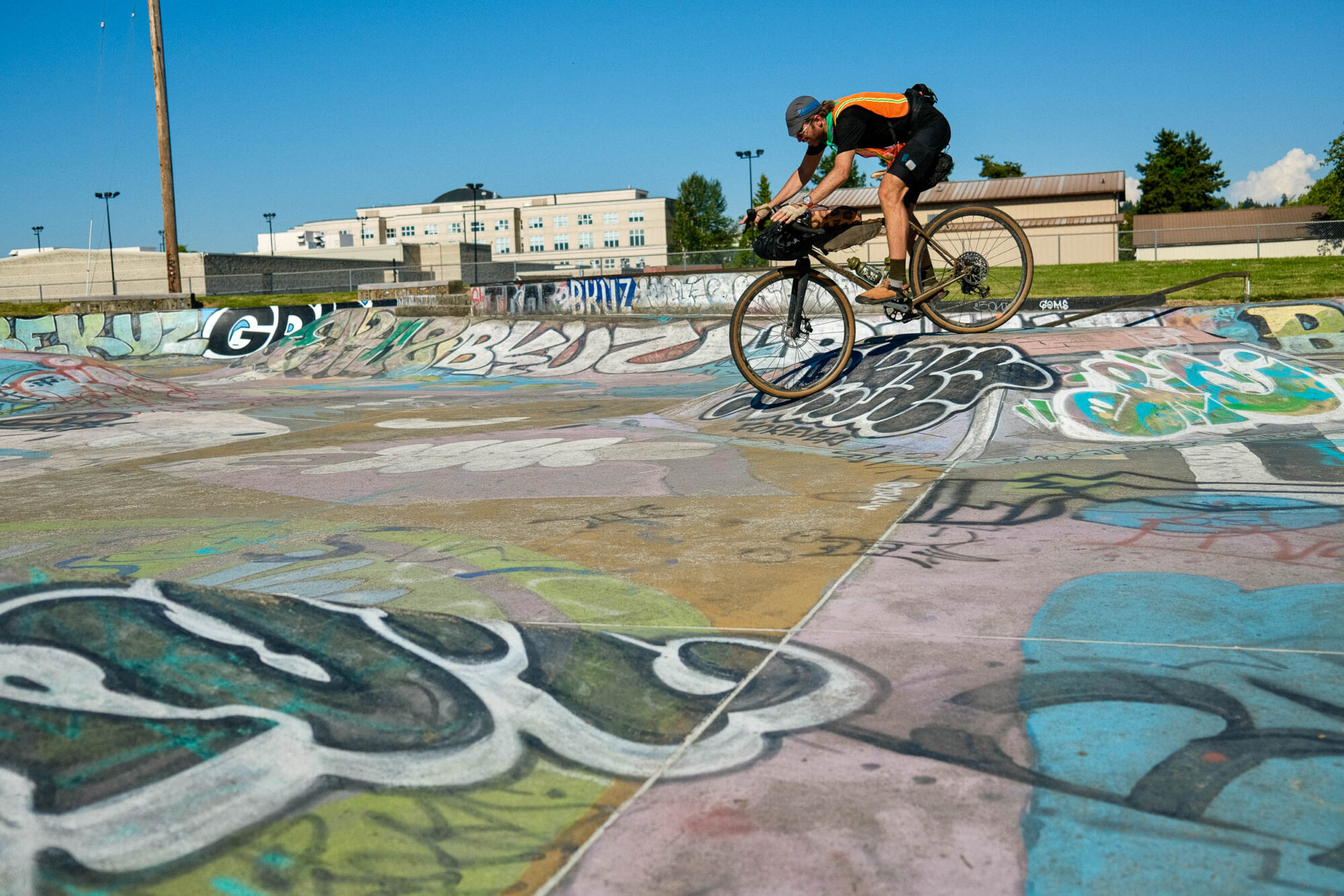
Having not pedaled much in the previous weeks, 100 miles was a big day for me. By the time I reached the Lake Washington bike path, I was feeling the heat, the miles, and the gas station french fries. A handful of fresh cherries powered me to my host’s house for the evening, and once there, we enjoyed the summer solstice sunset while feasting on a Grocery Outlet dinner of pasta and bagged salad.
Bon Jon Pass
Hoping for a cup of decent coffee, I’d dawdled in the city too long the next morning and missed my intended ferry to Bainbridge Island. Instead, I sat on the pier watching jellyfish in the bay and snapped photos of the Seattle skyline. As I sat waiting on the next ferry, I suddenly felt like taking a bus across the island to cut out some miles. Of the six passes, four came and went in two days and just over 100 miles. The remaining 350 miles were essentially a massive transport stage to connect the two outliers, and I wasn’t feeling particularly inspired. Compared to the peacefulness the passes themselves afforded, weaving in and out of Seattle to catch ferries felt tiresome.
The route through Bainbridge and over to Quilcene turned out to be a pretty lovely mix of rolling paved roads. Traffic was light, and foxgloves were in bloom. The invasive Himlayan blackberry crowded the roadsides and enveloped anything that sat unused for too long. I resupplied in town in the early afternoon just before heading up Bon Jon Pass, and I was thankful to be back in the trees. Bon Jon sits roughly 10 miles and 2,800 feet outside of town, and as I neared the top, a car stopped to let me know they had just spotted a mountain lion and cub “right up the road.” A driver’s estimation of time and distance to a cyclist are always a little off, so I spent the next 45 minutes dinging my bell and keeping an eye out for the little swamp where they’d spotted the mountain lions.
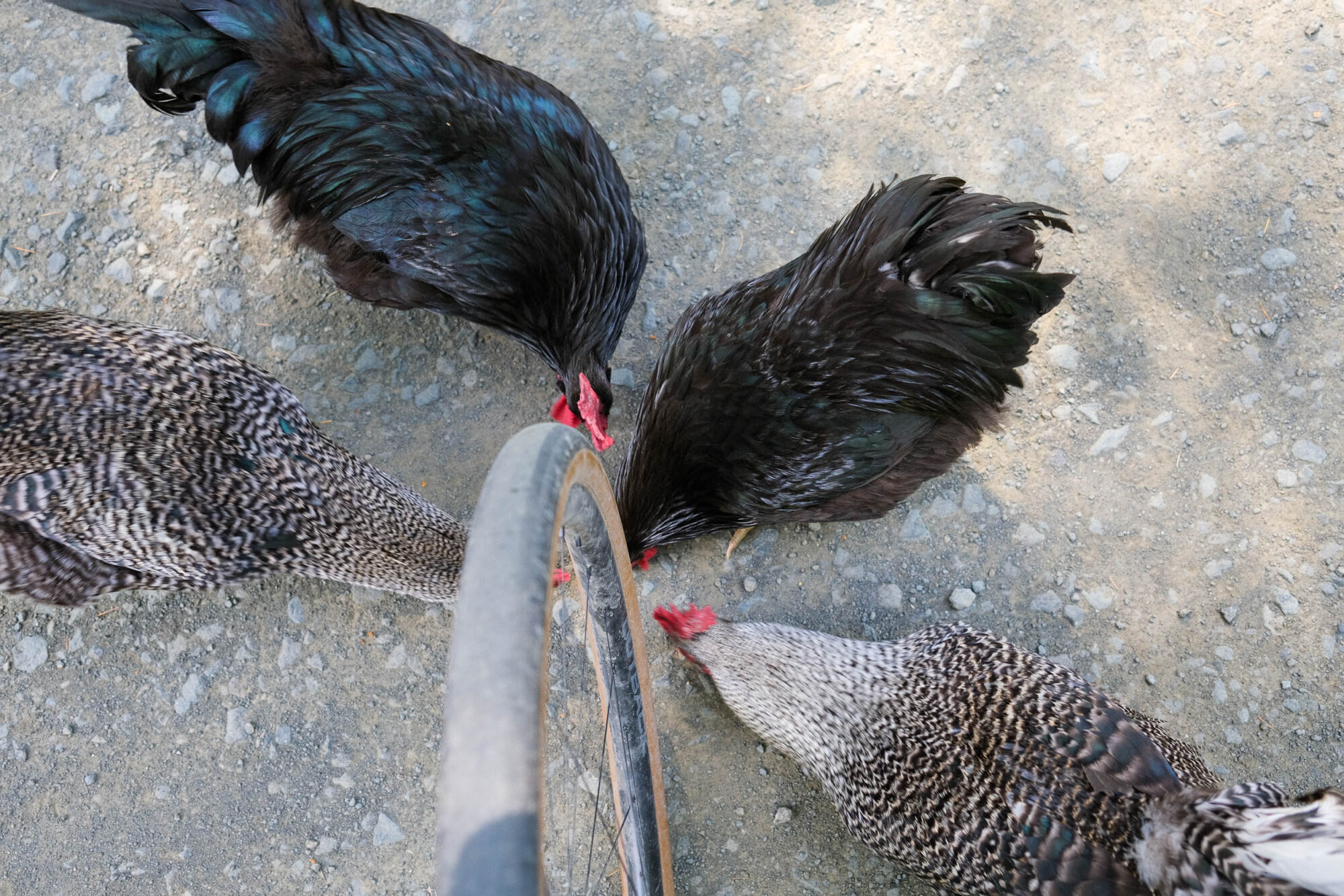
Instead of a swamp right up the road, my eyes were instead drawn to movement from what looked like a much different animal. Now, I could normally spot a chicken’s jerky movements from a mile away, but my brain couldn’t compute why a half dozen hens and roosters would be lazily pecking in the dirt way outside of town in mountain lion country. Unlike a wild animal that would have scattered at first sight, these cluckers immediately flocked to me when I paused for a photo. I chummed them a bit more with a beat-up Lärabar and then got out of there.
I crested Bon Jon Pass not long after the chicken encounter, paused to drink a Starbucks Doubleshot, downed some chicken strips (funny enough), and immediately turned around for the descent into Quilcene. The grade was steep, and I was flying through the forest. The chickens whizzed by. Lords Lake was there again. The pavement once more, and in less than half the time, I was back at the Peninsula Foods market for my evening resupply.
Out front, I enjoyed a popsicle and some chips while listening to Andi and Matthew bond over having just been released from prison. They hugged and kissed one another when they realized they had both done some time, and Matthew seemed not to have learned his lesson.
He kept asking Andi, “What’s going on tonight? Where’s the trouble?” He had a drunk laugh and kept turning to me every once in a while. I was tired enough not to care too much, but then he repeated the same statements, turned to me, and said, “Whaddaya think?”
I nodded, packed my bike, and pedaled on.
Barlow Pass
I finished the six passes on day four with Barlow Pass, a phenomenally beautiful climb along the Stillaguamish River in the Mount Baker-Snoqualmie National Forest. My wife met me for lunch in Everett, and we camped together that night in a drizzle across from Big Four Mountain.

Somewhere along the Green River, on day one, I started to consider what it means to be a good rider. I have a knack for being hard on myself when I’m not moving at the speed I want, and over the past year or so, riding a bike has turned into a performance activity for me. If I can’t pedal all of the 15-percent grade, then I’m not a good rider. If the same ride takes more out of me than it does others, then I’m a weak rider. Coming from a relaxed touring background, it’s a strange mindset to have adopted. For most of us, a good rider is often a fast rider, a competitive rider. That’s certainly the way I use the term, but it’s a term that leaves out a lot of people who get on a bike for various reasons. By that metric, and because I felt slow and tired at times on this tour, a ride that should have left me feeling fulfilled and content was shaping up to be “a bad ride.”
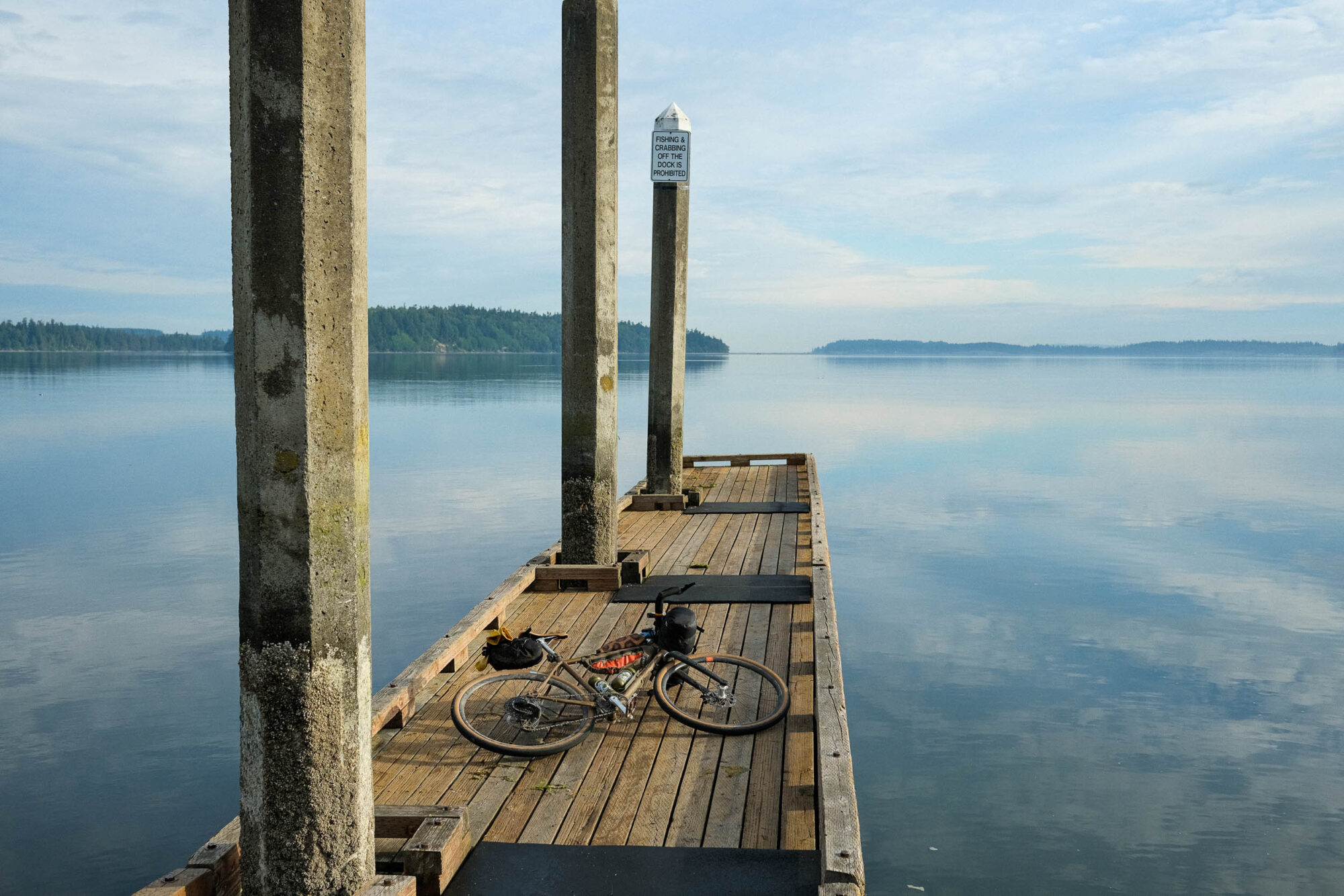
On my fifth day, I had no passes to climb. I simply needed to close the loop and get back to North Bend. A downed powerline had started a small brushfire on my route, so I took advantage of the forced break to relax and look through a few photos. I’d been setting up the camera on whatever roadside object I could find in hopes of snapping a decent photo of me riding, but I mostly produced either blurry frames or butt shots of me riding away. Taking photos and being creative on the bike is one of the things I love most about riding, and the question of being a good rider came back to me.
I realized this:
My wife is a good rider because she’s persistent, optimistic, and is still in the process of gaining back her confidence from a crash a few years ago. My friends Bear and Rux are good riders because they’re busy parents who still get out for rides and gently encourage their daughter to do the same. Dexter is a good rider because he’s fast and wins races. Eric’s a good rider because he’s dedicated the last few years to exclusively living and getting around on his bike. Lots of people are good riders for different reasons, so in my own lexicon, I’m going to start adding a little nuance to the definition. A good rider doesn’t fall on a spectrum of fast or slow, but rather a variety of attributes that draw out an array of traits and intentions that are worth celebrating.

For myself and this tour, I’m pleased with my own creativity to have put together a route based on something as trivial as a set of tires. For no good reason other than it sounded intriguing, I pedaled 450 miles around Washington based on some late-night scrolling and route-making. I passed through Mount Rainier National Park, several national forests, state land, and into parts of Washington that were previously nowhere on my radar. I camped next to and drank from countless rivers and streams. I legally camped, stealth camped, and was hosted by Jess in Seattle. I took the names of a few tires and turned them into an experience that started with a raccoon eating my frame bag and food and ended with a plate of Oaxacan enchiladas.
Try doing that with the SRAM RED XPLR AXS drivetrain.
Further Reading
Make sure to dig into these related articles for more info...
Please keep the conversation civil, constructive, and inclusive, or your comment will be removed.







